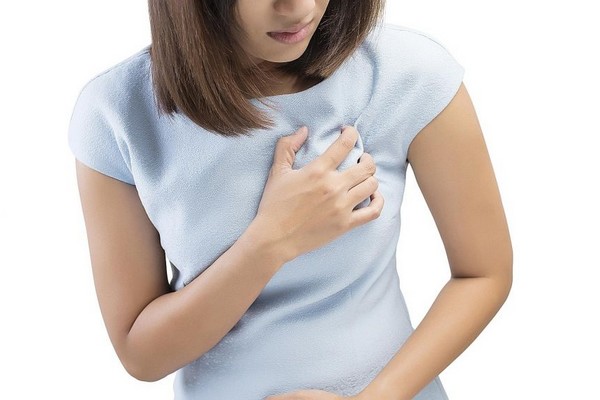Health problems such as breast conditions are no longer a matter of embarrassment or shyness in India. It is important to address these ailments with equal concern. Dr Rohan Khandelwal, the best breast specialist in Gurgaon, is a leading expert for the compassionate treatment of all kinds of breast conditions.

In this article, Dr Rohan Khandelwal helps us understand more about breast pain – its causes and treatment methods.
What is breast pain?
Breast pain is medically referred to as mastalgia. It is more of a symptom than a condition in itself. Breast pain is characterised by tenderness, tightness, soreness or sharp and throbbing pain in the breasts.
Breast pain can affect anyone and varies in intensity from person to person. People experience breast pain at distinct time intervals corresponding to the menstrual cycle. Sometimes, breast pain may also occur irrespective of the menstrual cycle. Hence, this illness is majorly classified between cyclic and non-cyclic reasons.
What are the causes of breast pain?
As we know now that majorly breast pain is distinguished between cyclic and non-cyclic reasons. However, the causes of breast pain expand these divisions. Here are some most common reasons for breast pain experienced by men and women:
- Cyclic reasons – Breast pain that occurs before, after or throughout the menstrual cycle falls in this category. Cyclic breast pain often feels heavy and causes breasts to feel lumpy or swollen. This pain depends upon hormonal fluctuations and largely varies on the symptoms of the menstrual cycle.
- Changing hormone levels – Estrogen and progesterone are two hormones primarily significant in your reproductive health. Sudden and atypical changes in the levels of these hormones can also result in breast pain.
- Breastfeeding – The act of breastfeeding your newborn can also cause breast or nipple pain.
- Breast cysts & fibrocystic changes – Breast cysts are fluid-filled lumps in the breasts. They are non-cancerous lumps that may or may not cause pain. Fibrocystic changes lead to the development of cysts and fibrous tissues inside the breasts. These formations can also cause pain and tenderness.
- Breast Infection – Certain infections such as mastitis can lead to a stabbing or burning pain in the nipples or breasts. This infection mostly impacts women during breastfeeding because of a clogged milk duct. Nonetheless, it can also happen at other times.
- Injury or breast surgery – An injury or trauma can cause sudden pain in the breast. An injury to the chest wall can also impact the breasts and cause pain. Breast surgery or scar tissue formation can also lead to experience pain in the breasts.
- Certain medications – Breast pain can also be caused as a side-effect of specific medications such as the ones for hormone control.
- Breast cancer – Most of the time, the presence of breast cancer does not cause any pain. However, sometimes breast tumours can lead to painful conditions. In case you experience some amount of breast pain, you should not directly associate it with breast cancer. It is, thus, important to learn about the signs and risk factors of breast cancer. You should watch out for changes in the size, shape or appearance of your breast, abnormal nipple discharge, or presence of lumps.
- Poorly-fitted bra – The type of undergarment that you wear also helps in determining your breast health. Sometimes, tight and poorly-fitted bras can also lead to excessive pain and discomfort.
How is breast pain treated?
The treatment of breast pain depends on many factors such as the reason behind breast pain, severity of symptoms, age and overall health.
Also Read: Everything You Need To Know About Breast Density
Your healthcare provider will first aim to diagnose your condition rightly. He/she will discuss your personal and family medical history of breast health and your present symptoms. Your doctor will then examine your breast health and overall health. He/she may order a few tests such as a manual physical checkup, mammography, breast X-ray, CT Scan etc depending upon the findings of the initial investigation.
Common treatment protocols for the above-given reasons include:
- Management and treatment of infection
- Choosing properly fitted support bras
- Medicinal treatment to manage side-effects or changes
- Surgical intervention or correction
